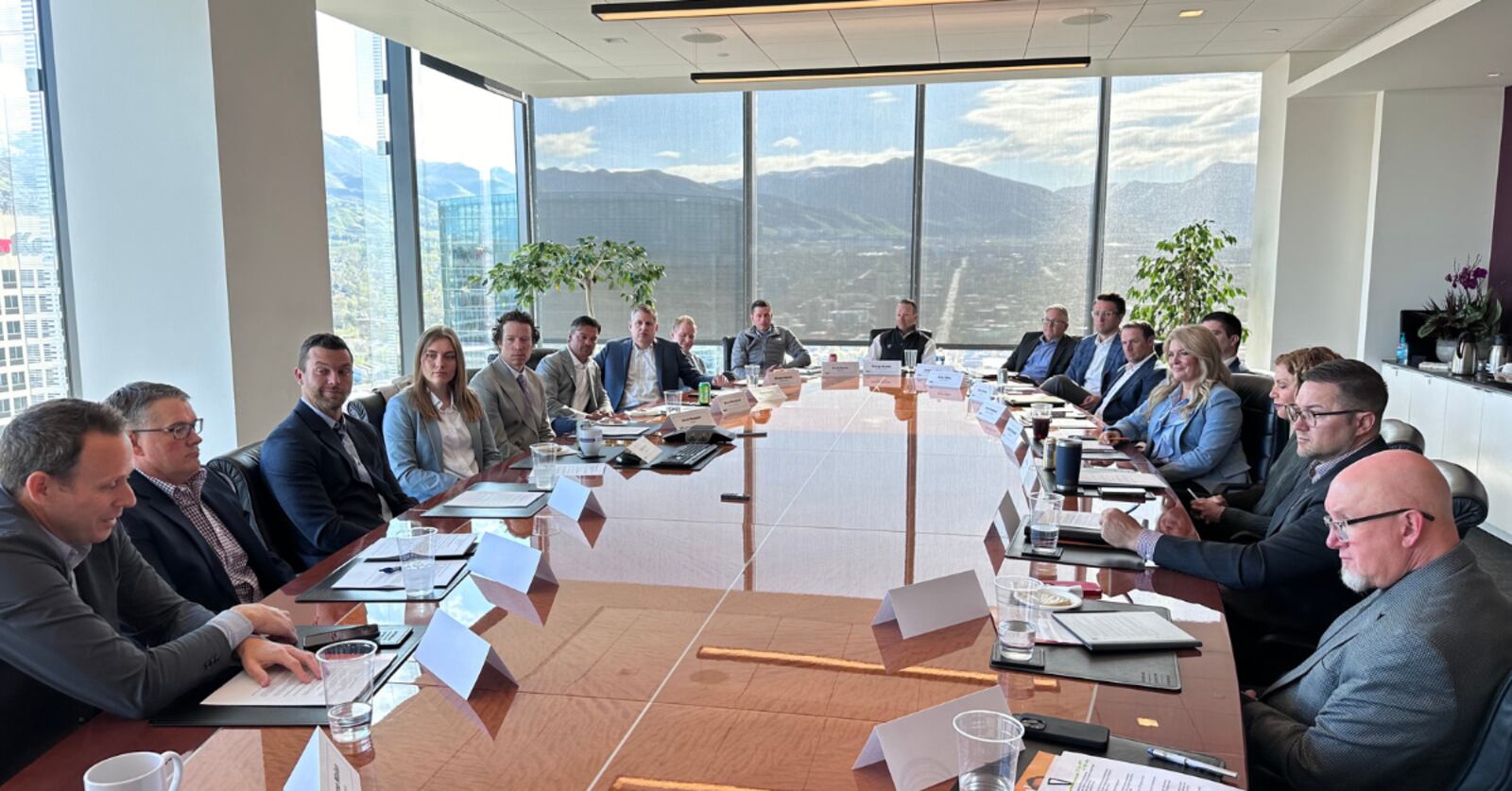This story appears in the May issue of Utah Business. Subscribe.
Last month, Utah Business partnered with Dentons Durham Jones Pinegar to host a roundtable on the commercial real estate industry in Utah. Moderated by Nadia Letey, SVP at CBRE, participants discussed the impacts of employment and wage statistics, the possibility of another Winter Olympic Games, fluctuating interest rates and more.
Do you see employers wanting to relocate to Utah? What will drive them to do so?
Chris Liddell | SVP | CBRE
From the industrial side, Utah has several strategic and logistical advantages: I-80, I-15, the Intermodal Hub and international air freight. Labor has been a concern for several companies considering coming here due to the availability and the rising cost. Compared to our coastal competitors, we have very qualified and cheap labor, but availability is difficult.
Nate Boyer | President | The Boyer Company
Similarly, cities used to not like data centers because they weren’t great employers, staffing no more than 20 or 30 people in some cases. Now, cities like data centers because they don’t have a high headcount, and some cities have an unemployment problem.
Daniel Stephens | Managing Partner | The BlackPine Group
Utah is still one of the fastest-growing states. We’re still the youngest state in the country. We still have more kids than any other state in the country. Our workforce will constantly be replenished, and they’re skilled and educated. We have manufacturers looking to relocate to Utah — primarily to Weber County — in our industrial space because they want that young, skilled, educated workforce.
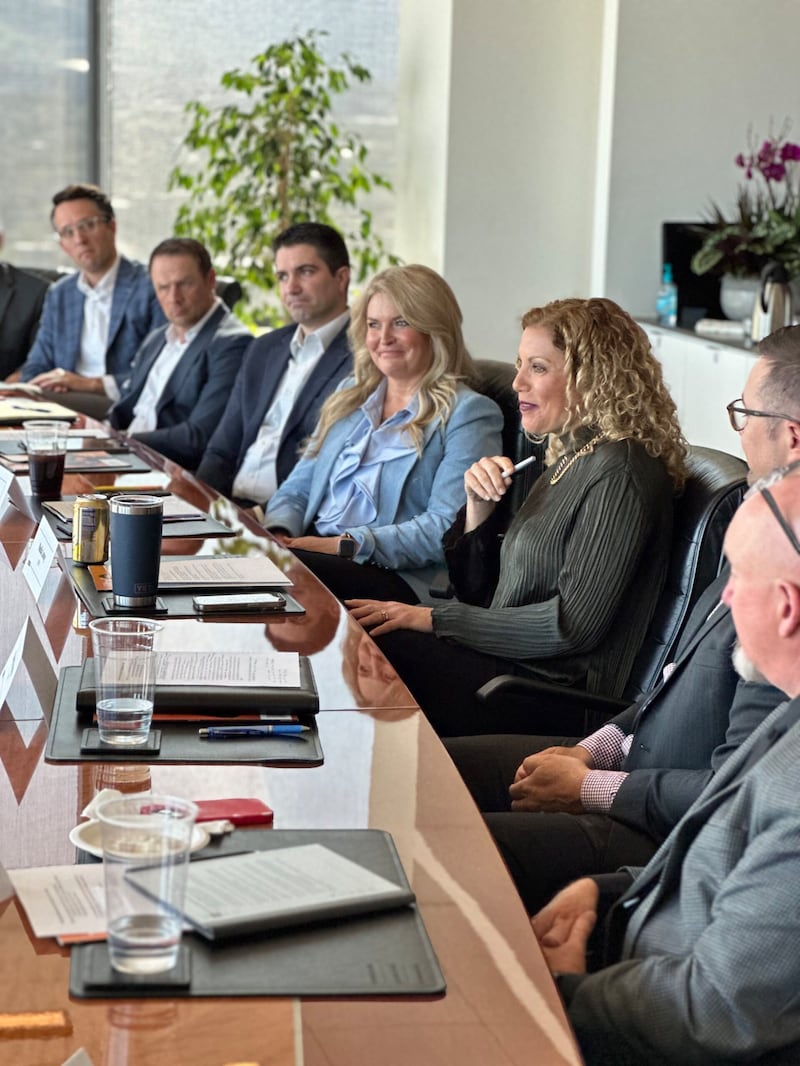
Is Utah well-positioned for headquarters relocations?
Jeff Rossi | Executive Managing Director | Newmark
One type of headquarters is a place where people come to connect and collaborate briefly before returning to wherever they live. We’ve seen that kind of headquarters flourish here. Then there’s the more traditional headquarters that comes here and grows here and utilizes our people. Given the natural resources, the economic development positioning, the transportation availability and the mostly affordable housing, this is a great place for a headquarters.
Brian Dilley | Managing Director | Dakota Pacific Real Estate
One of the challenges we face in landing or expanding these headquarters opportunities is affordability. We’re going through a very arduous entitlement process in Park City and trying to provide some affordable housing. There’s just no affordable housing up there for staff, and we’ll continue to see these difficulties across the state as it becomes increasingly challenging to build.
George Arnold | Partner | Hamilton Partners
I agree with Jeff; the hybrid model headquarters is what’s going to occur here. The Olympics and entertainment district will draw all sorts of different people. I’ve only been here 10 years, but I’m bullish on the future and what this place can sell. You get the natural beauty and a city moving up the food chain. That’s going to help attract future companies.
When do you see interest rates decreasing? What will that decrease bring to commercial real estate locally?
Bryce Blanchard | CCIM Utah Chapter
Inflation came out this last week at three and a half. If it stayed at three and a half. We’re not getting interest rate reductions. I’m concerned people are hoping for that and underwriting pro formas for development purposes for back and exit cap rates, assuming we’ll get interest rate relief. I’m not so sure the war is over. As a real estate community, we have to understand that the days of three-and-a-half cap industrial sales are gone.
Jonathan Buss | Senior Division Underwriting Counsel | First American Title
My information is there’s over 900 billion, nationally, in commercial mortgages maturing this year. What you’re saying is going to complicate that math because they’re going to be forced to look at the new loan costs. If you’ve got a declining real estate value and declining rent, it may spur some sales that the seller doesn’t want to have happen. But if those buyers are out there looking for bargains, there may be a benefit.
Brock Bench | Investment Real Estate Manager | Altabank
A lot of our projects have a four percent rate. Now, we’re looking at an eight percent rate. We have remargining covenants at coverage ratios. As you go to resize what the market is today, there’s a capital call, or they invite you to go somewhere else. From a banking standpoint, the Fed is very aware of the commercial real estate market’s stress.
Steven Price | Founder & President | Price Real Estate
If this room had gathered 10 years ago, most of the developers would have been local — they weren’t funds. The GP/LP [general partner/limited partner] structure has changed in the Salt Lake City market, and it’s changed the question just asked because that kind of capital is different because the investors are different. It’s not just the Fed and that market movement and how we’re looking at that; there are funds here now.
Ryan Speirs | Utah Regional Manager – REBG, SVP | Zions Bank
Another thing worth noting from a banking standpoint: Last spring’s banking crisis was more significant than we realize. We saw three significant banks fail for different reasons, and as a result, we’ve seen capital ratios for banks increase. That continued pressure is something banks are going to be dealing with for a while from a regulatory standpoint. When possible, banks will work with borrowers to give some breathing room, hoping we see rates come down.
Eric Carlson | CFO | Larry H. Miller Real Estate
I’m bullish on what will happen with CPI [the consumer price index] because residential housing is driving it. I don’t know how many, if any, multifamily guys are pushing rents five and six percent right now. Help’s on the way — it’s just going to take six to nine months. We had thought that would’ve happened sooner, but we’ll likely start to realize some of that in the second half of this year.
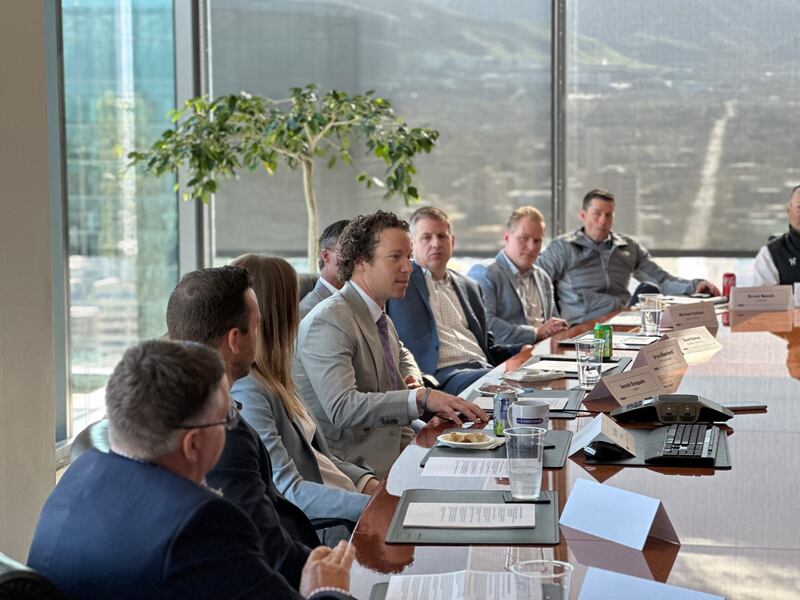
Where do you see the next growth sector in our state and commercial real estate? Are we positioned to handle it?
Rob Merrick | Senior Associate, Architect | FFKR Architects
I’m very excited that NHL [the National Hockey League] is coming here. We’ve got several projects downtown that are teetering, waiting on Ryan Smith to say, “Yay, we’re staying,” or, “We’re going to go down south.” I’m hoping this pushes them to stay. I think they would do so with the Olympics and the value of having those venues downtown. When you think about the MLB [Major League Baseball] going down there by the fairgrounds, the growth in that area is tremendous.
Michael Holman | VP, Development & Finance | Overland Group, Inc.
The Larry H. Miller Company’s sports and entertainment district is anchored by sports, but it’s a mixed-use facility, and people want to live close to things to do. That’s the dream for cities: urban, mixed-use in the suburbs, being able to come together. It’s successful because we’re combining retail, hospitality and multifamily all in the same space, making it a cohesive development. We’re financing it separately and have different ownerships, but we’re making it cohesive, and people feel like they’re living in a community.
Jake Despain | President, Board of Directors | NAIOP Utah
We’re extremely diversified, which is awesome. I’m looking at a project out on Redwood Road: multifamily townhomes. The growth of multifamily there and the announcement of MLB changes that whole area. These decisions the government is facilitating are trickling down to benefit the community.
What would hosting the 2034 Winter Olympic Games do for commercial real estate here?
John Smith | VP, Commercial Sales Executive | Fidelity National Title National Commercial Services Utah
When Rice Stadium became Rice-Eccles, that was a big deal. We got this brand new, beautiful stadium. That could happen again with the Olympics coming. The Olympic committee was just in town, and they talked about how it’s great these facilities are still being kept nice and ready to go. To see what this valley’s going to look like in 2034 — it is going to blow our minds.
Jeanette Bennett | Executive Managing Director & Market Leader | Colliers Utah
After the world comes here and sees what we have to offer, the growth will continue. There will be changes before and after the Olympics. When the world sees our beautiful mountains and experiences our amazing volunteers and language skills, there’ll be a surge.
Bryce Blanchard | CCIM Utah Chapter
We were a flyover market for the first half of my career. From an institutional standpoint, nobody wanted to stop in to buy anything in Utah. The demographic of the capital choosing Utah has changed, and that will continue to change with the Olympics. The Olympics brings prestige and comfort to a market like Salt Lake.
Rob Merrick | Senior Associate, Architect | FFKR Architects
The last time, we didn’t have any infrastructure; the I-15 corridor was a nightmare. Now, between the Rice-Eccles and the Delta Center, we’ll have all these venues and won’t have to use the Triad Center parking lot for the awards ceremony. We have opportunities to amaze the world. And it’s not going to be just that — it’ll be whatever happens in the years to come after that based on what we were able to showcase.
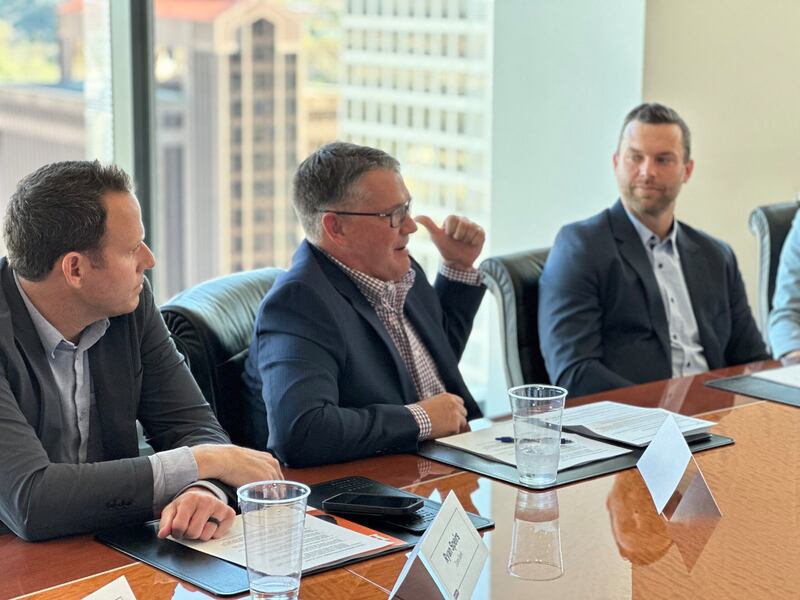
Life sciences has been one of the fastest-growing industries in recent years. How have you seen this change the local commercial real estate landscape?
Ryan Speirs | Utah Regional Manager – REBG, SVP | Zions Bank
From a banking perspective, we’ve seen an increase in life sciences requests. A lot of that is older B2C [business-to-consumer] office conversions to life sciences. In Utah, we have one of the highest concentrations in pharma, device, lab and R&D [research and development]. We’re just starting in life sciences. The office environment we’re in right now creates a real opportunity.
Steven Price | Founder & President | Price Real Estate
Life sciences is an untapped vein. It’s a different kind of real estate; you need clean rooms, vents and water. You can’t work remotely if you’re in a lab. You’re in that lab every day, and most of those labs will not move south because they need to interface with the University of Utah and Hill Air Force Base. If we work together as a real estate community, we can help propel the life sciences industry because we’ve built that space.
Nate Boyer | President | The Boyer Company
It is such a capital-intensive business. A lot of it is driven by venture capital that’s dried up recently. That has to come back for us to see more life sciences in Utah. You have to involve the government to help spur companies and economic development. A few companies whose VC dollars dried up haven’t been able to expand.
George Arnold | Partner | Hamilton Partners
I’m from Boston, where they retrofitted warehouses into life sciences buildings. The problem for developers is the huge capital investment. If you build it, will they come? Do you need them to come before you build it? Back there, it’s taken off; people are buying buildings and retrofitting them for life sciences. It’s possible here, it’s happening. It’s just a question of whether we can reach the next step.
Jeanette Bennett | Executive Managing Director & Market Leader | Colliers Utah
There are many life sciences companies starting south of Point of the Mountain. They start small, but they have ideas and research connected to the universities. Utah might be known as a life sciences state in the future, more than tech or other things. Our only Nobel Prize winner in Utah is a geneticist. There is a basis here for this being one of our big calling cards if we can overcome some of the challenges.
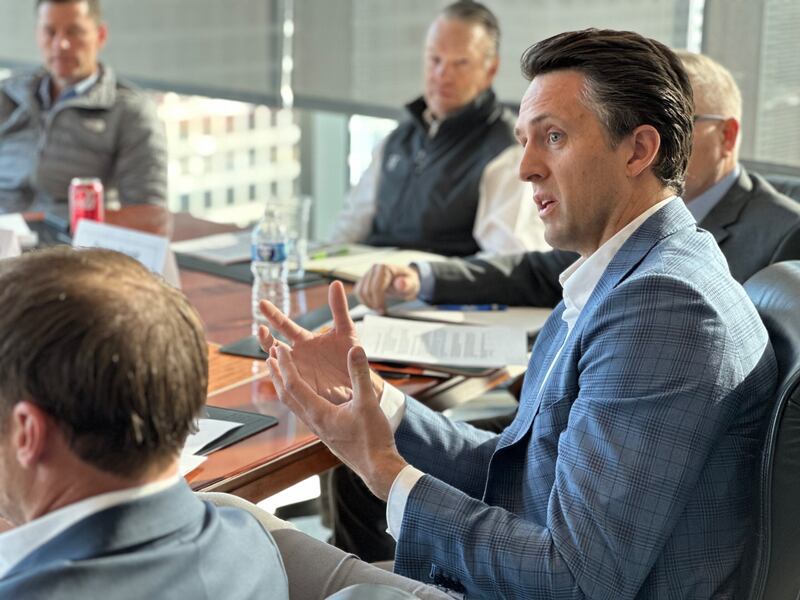
We’ve seen reports of tech jobs slowing. What effect will this have on commercial real estate?
Chris Liddell | SVP | CBRE
There’s so much tech in the north end of Utah County. Tech flourishes with cheap capital, and it’s gotten more expensive. There were 31 new buildings built in Utah County in the last 18 months. The majority of those are sitting empty. As interest rates decrease and expectations reset, that might help fill some of the buildings. In Utah County, large increments of space have become a real soft spot in our marketplace.
Jeff Rossi | Executive Managing Director | Newmark
Technology in Utah is one of the great drivers. As technology continues to change, we’ll continue to evolve and grow. We look to the headquarters conversations, the life sciences conversations, and the health care conversations and how they impact technology in a collaborative, supportive way. I am bullish on the state of Utah and technology in the state of Utah.
Michael Holman | VP, Development & Finance | Overland Group, Inc.
The majority of my neighborhood is in some form of tech sales. During COVID-19, you just needed a warm body, and you would beat your sales expectations. That has slowed down, and now almost everyone in tech sales has returned to the office in some form. I’ve seen several layoffs, but more people have returned to the office, which is an interesting counterbalance in real estate.
Daniel Stephens | Managing Partner | The BlackPine Group
We tend to think of our tech market as being in Utah County or South Salt Lake County, but the amount of tech happening on Hill Air Force Base is incredible. With more federal funding, Northrop Grumman is expanding, and there are technological advances in the health care industry. If we broadened this to be a Wasatch Front conversation, we would feel less like it’s a down market. I think it’s growing.
Scott Bishop | President & CFO | Woodbury Corporation
Right now, everything has to be mission-driven. Building without a tenant, mission or subsidy — it’s just not going to happen. Hill Air Force Base is booming because the government is incentivizing it. Without that, you’re not developing today. You need that mission to drive the development.
What’s one word that would describe the landscape of commercial real estate in 2024?
Eric Carlson | CFO | Larry H. Miller Real Estate
Anxious. Fortunately, we’ve gotten into real estate more recently and feel well-poised for the future. At the same time, this is an ecosystem; all of our projects — these big mixed-use projects — aren’t great unless they have all the key components. You can’t build a mixed-use community with all apartments.
Brian Cheney | Shareholder | Dentons Durham Jones Pinegar
Resilient. We’ve discussed what’s wrong with the market but continue to be extremely resilient — not letting this stop growth, pursuing awesome opportunities with sporting teams and continuing to think big.
Brian Dilley | Managing Director | Dakota Pacific Real Estate
Adaptive. How we adapt to new normals, interest rates, construction costs … We’re all trying to figure out not just how we survive but how we thrive. How do we capture the continued growth and participate in the real estate market here?
Jonathan Buss | Senior Division Underwriting Counsel | First American Title
Sanguine, meaning cautious optimism. I’m optimistic while recognizing the difficulties.
Brock Bench | Investment Real Estate Manager | Altabank
Discipline. It will be some time before we see a new shift, but there’s probably not a better market that I would rather be in than right here in Utah to weather the storm.
Scott Bishop | President & CFO | Woodbury Corporation
Measured. We have lots of opportunities. It’s resetting expectations from cap rates when they were three and a half percent, and now we are going, “Okay, what is a return we’re willing to take?” We are measuring that and looking for opportunities.
Jake Despain | President, Board of Directors | NAIOP Utah
Grateful. I’m grateful to be here. I think everybody would say the same. We have much to be grateful for in this great state and city. It’s not bad to have some cleansing; liquidity will be important.
John Smith | VP, Commercial Sales Executive | Fidelity National Title National Commercial Services Utah
Four words for me: bullish, adaptive, resilient and flexible.

